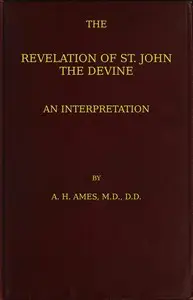"Observations upon the Prophecies of Daniel, and the Apocalypse of St. John" by Sir Isaac Newton is a study that carefully looks at the prophetic writings in the Bible. Newton attempts to explain the meaning behind the complicated prophecies and symbolic language found in the books of Daniel and Revelation, viewing them within their historical context. The book starts with the Old Testament, and the important historical, spiritual, and political influences upon the author's interpretations. He also reflects on the text collectors of the Bible and points to the meaning of the Law that was found when Josiah was King. By focusing on these points, Newton emphasizes how God's promises have stayed strong through time, getting the reader ready to understand the important events and what they suggest about the future using Newton's system of interpretation.

Observations upon the Prophecies of Daniel, and the Apocalypse of St. John
By Isaac Newton
In the early 1700s, a prominent thinker dissects biblical prophecies to reveal their historical importance and what they might mean for times yet to come.
Summary
About the AuthorSir Isaac Newton was an English polymath active as a mathematician, physicist, astronomer, alchemist, theologian, and author who was described in his time as a natural philosopher. He was a key figure in the Scientific Revolution and the Enlightenment that followed. His pioneering book Philosophiæ Naturalis Principia Mathematica, first published in 1687, consolidated many previous results and established classical mechanics. Newton also made seminal contributions to optics, and shares credit with German mathematician Gottfried Wilhelm Leibniz for formulating infinitesimal calculus, though he developed calculus years before Leibniz.
Sir Isaac Newton was an English polymath active as a mathematician, physicist, astronomer, alchemist, theologian, and author who was described in his time as a natural philosopher. He was a key figure in the Scientific Revolution and the Enlightenment that followed. His pioneering book Philosophiæ Naturalis Principia Mathematica, first published in 1687, consolidated many previous results and established classical mechanics. Newton also made seminal contributions to optics, and shares credit with German mathematician Gottfried Wilhelm Leibniz for formulating infinitesimal calculus, though he developed calculus years before Leibniz.
















